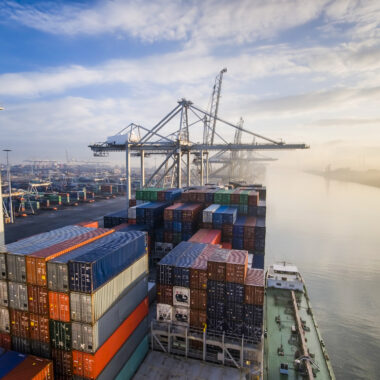We explore how the COVID-19 pandemic could, and should, mark an increase in the use of CVAs
Will COVID-19 mark the resurgence of CVAs?
It’s hard to believe that Company Voluntary Arrangements (CVAs) have been a fully-fledged construct of the restructuring market for almost 35 years. The CVA was first introduced in the Insolvency Act 1986 yet this highly creative and value preserving mechanism was rarely used until the 2008 financial crisis.
Since then, CVAs have never been far from the headlines, with many attracting both fame and notoriety often due to disputes between retailers and landlords – but is this reputation warranted?
When used correctly, and in the right circumstances, a CVA can be used to successfully rehabilitate fundamentally sound companies which, for a variety of reasons, are facing financial challenges and need a re-set to rebuild a resilient business model and realign economic interests for investors, employees, customers, suppliers and UK plc.
CVAs typically only account for two per cent of all insolvency appointments in the UK but as we all turn our attention to supporting and preserving businesses that, through no fault of their own, have suffered as a result of the COVID-19 pandemic the CVA regime is a well-placed and productive rescue mechanism that should be embraced.
A CVA works particularly well when there has been a shock to the system – for many businesses the COVID-19 pandemic has been the biggest shock of all. It has created a situation in which many previously well-run businesses are now struggling and, to support the rehabilitation of these companies, we need to create a fair platform where all stakeholders work together for longer-term mutual benefit.
We should also see the COVID-19 era as a driver of change. Restructurings are not and should not be unduly opportunistic, but as advisers we have a chance to look at CVAs more constructively and creatively than the industry has done before, and in a way that aligns with the intentions behind the freshly enacted Corporate Insolvency and Governance Act 2020 to maintain and help viable businesses survive.

What is needed for a CVA to be successful?
If a company is facing financial difficulties it requires the management team to take a step back and understand the changes they can make to their business in order to create longer term value for the greater good. They need to ask themselves what changes can be made now to make their business robust enough to survive the next 12-18 months, and to thrive thereafter. This sometimes means making hard or uncomfortable choices, but ultimately can help to rescue a company while also creating a culture that continually focuses on operational and financial resilience in a way that will build longer term sustainable value for all stakeholders.
For a company to secure approval for a CVA, it requires support from 75 per cent or more of its voting creditors with a secondary test that more than 50 per cent of favourable votes must be from unconnected parties. Naturally there will be some creditors that are more averse to the concept than others regardless of the economics or arguments put forward.
While this outlines the votes that need to be secured in order to ensure a CVA is approved, how this is achieved is far more important. Often the benefits to compromised creditors of supporting a company’s genuine attempt to rehabilitate are poorly explained or buried in schedules and text.
To address this, CVA proposals should include stronger emphasis in areas such as:
- Open and honest communication with all creditors from the outset. This includes constructive discussions with all creditors and stakeholders, regardless of whether they are to be compromised, explaining the benefits and implications of approving the CVA.
- An insightful analysis of what has happened to the business and the impact on the immediate and future financial position.
- A clear statement of what will be different going forwards – how has the business changed, why is the situation investible and how have legacy issues been resolved.
- Confirmation of support from stakeholders who, despite potentially having little or no voting capacity in the CVA, are needed for ongoing working capital requirements or industry standing. This includes contingent creditors, regulators, trade bodies and secured creditors.
- A clear statement of the ask from the compromised creditors that shows that as many relevant stakeholders as possible are being asked to contribute in some form to the restructuring, and where possible not isolating one class. This includes identifying connected parties and ensuring consistent, or potentially even less favourable, treatment against comparable creditors.
- Alignment of interests wherever possible which could include creative ways for compromised creditors to benefit from future performance and to secure a return. This could include optimised returns from a compensation fund or restructured trading relationships such as improved payment terms or future success-based payment mechanisms.
- A clear and detailed statement of the alternative outcomes should the CVA not be approved, and one which does not just focus on a liquidation outcome.
Lastly, and this cannot be under-estimated, there is no “quick” feasibility and execution process for CVAs other than simple scenarios such as dividend distribution exercises. Despite best efforts and intentions from all parties, constructing a robust and supportable CVA proposal is time consuming and can become drawn out as stakeholder feedback is received and reiteratively fed back into the proposals.
Are CVAs better suited to certain sectors?
Many recent high-profile CVAs have been within the retail, leisure and hospitality sectors, with a focus on landlord compromise, but the reality is that a CVA can be a powerful tool for a company and its stakeholders operating in any sector of the UK economy.
However, CVAs often fail if they adopt a strategy of simply resetting and rolling the dice again by a one-off liability write off exercise. While this isn’t wrong per se, in order to increase the chance of a successful outcome the CVA restructure ideally needs to be partnered with an operational or strategic step change within the company.
The backdrop of a global pandemic and the possibility of a second wave of COVID-19 creates significant uncertainty and nervousness within the supply and demand chain in every sector of our economy. If one business struggles, there is usually a ripple effect for businesses in its supply chain or adjacent industries with globalisation meaning companies can now also be impacted by problems overseas. For example, if production in the automotive or aerospace sectors is put on pause, this will adversely impact all businesses within their supply chains and potentially across their entire customer base.
Targeted intervention to compromise liabilities via a CVA at any juncture in the supply chain minimises bad debts and more importantly supports future trading relationships, job retention and value creation.
Is a CVA right for my company?
While there are clear benefits to a CVA that is done for the right reasons and under the right circumstances, it may not be suitable for every business and inevitably some CVAs will fail. The reasons for failure are plentiful, but often include a combination of factors such as lack of cash horizon, an inability to secure buy-in from key stakeholders, a dominant dissenting creditor or class of creditors, restructuring plans that are compromised from the optimum simply to gain supporting votes, and a lack of support from the business’ supply chain post-CVA.
The resurgence of the CVA?
In the unprecedented times we live in it is more important than ever that companies and their advisers explore every avenue to promote the rehabilitation of businesses, whether through solvent rescue financing or through strategic and rationalised use of insolvency regimes, both old and new.
CVAs should be used to preserve value for businesses that deserve it and we hope to see them used more creatively than ever to restructure and reposition companies that are determined to make a genuine change to their business models in order to protect the future of their organisation.
Creditors should demand that insolvency practitioners have a high bar to the CVAs to which they put their names. That said, where there is a genuine force majeure that can be identified, such as the impact of COVID-19, and resolved in order to support the rehabilitation of a company moving forwards, a CVA should always near the top of the options under discussion.
Ian Corfield is a Partner in our Restructuring Advisory team and has advised on a number of successful CVAs throughout his career, including the rescue of the Spanish tapas restaurant chain, La Tasca. The restaurant chain simultaneously repositioned its business model to focus on the quality of its offer while also reviewing its store footprint. FRP is currently advising on a number of CVA situations and if you are interested in discussing CVAs in more detail please contact Ian on ian.corfield@frpadvisory.com.








